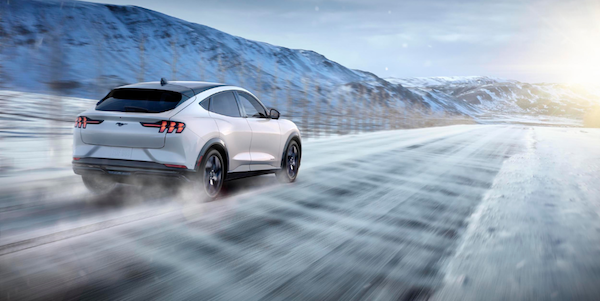By now I think we’ve all seen the nightmare that unfolded in Chicago recently with Tesla owners whose electric vehicles died and would not take a charge. This information comes from Ford, but most of the advice would be good for all EV owners.
- Jerry Reynolds, CarPro Show Host
U.S. electric vehicle sales hit a record last year, according to Kelley Blue Book data, with nearly 1.2 million U.S. vehicle buyers opting to go electric in 2023. Ford says record EV sales last year mean a lot of new owners are heading into their first winter with an EV. That said, the automaker is providing some tips for how you can best prepare your EV to maximize range in extreme weather conditions. Some have Ford-specific information but many of the tips apply to any electric vehicle.
1. Park your EV in a garage: Garage storage helps to ensure that harsh weather conditions outside do not affect your vehicle, and maintaining a warmer storage temperature than outdoors will aid in vehicle and battery performance.
2. Plug in your EV when parked for extended periods of time: Keeping the vehicle plugged in works to maintain battery health and helps to prevent excessive discharge scenarios.
3. Precondition your vehicle before use to warm the battery while plugged-in: By preconditioning your vehicle, you’re allowing the battery to warm to optimum temperature before use, positively affecting range and driving dynamics. For Ford EV owners, preconditioning can be scheduled using the vehicle’s SYNC touchscreen or from the comfort of your couch using the FordPass app.
4. The best way to keep warm: If equipped, use the heated seats and steering wheel as primary heat to reduce energy consumed by HVAC.
5. Turn off the heat when charging your EV: When charging, turn off the heater if possible, or lower the temperature enough to remain comfortable (especially when using DC Fast Charging).
6. Use your vehicle’s Ford Onboard Navigation to locate a DC Fast Charging station - In doing this, the vehicle preconditions by warming up the battery within 20 miles of your destination. This allows the battery to accept a charge faster in cold weather, getting you back on the road quicker.
7. Keep driving speeds moderate as high speeds use more energy – Higher speeds can negatively impact range in all types of weather. For best results, Ford recommends limiting your speed when possible.
8. Ensure your tires are at the proper pressure – Proper tire pressure not only works to maximize range, it also works to ensure that the correct amount of tire surface area is gripping the road. Tires that are over or underinflated can lead to range degradation along with safety and performance issues. You can find the proper tire pressure figures for your vehicle using either the sticker on the door jamb, the tire pressure app on your center screen, or the Ford owner’s manual shortcut also located using the center screen.
9. Plan your route and be prepared for whatever winter brings: Before leaving, identify all the charging locations on your route and plan your stops strategically. As with all winter driving, expect the unexpected. Make sure you have a plan in the event you run into poor conditions.
Ford says its EVs have been tested in extreme conditions, enduring months of real-world winter driving in Alaska and Michigan’s Upper Peninsula. Additionally, the automaker says its EV batteries themselves have been subjected to temperatures as high as 140°F to as low as minus 40°F in Ford’s atmospheric test chambers.
Photo Credit: Ford.

